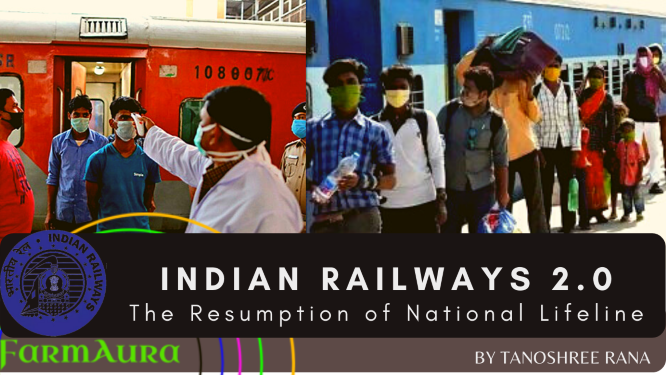The announcement of Indian Railways to run 15 pairs of AC trains from New Delhi to several cities from May 12, the GOI has finally seemed to answer the distress call of many migrant workers battling with uncertainties due to the lockdown. The Railways seem to be targeting a small fraction of the about 20 million passengers who rely on rail transport every day under normal circumstances, by focusing on premium services. The Ministry of Home Affairs has issued detailed guidelines and standard operation procedures (SOP) for the movement of people by trains.
From making wearing face masks mandatory to undergoing screening at departure, the Ministry is leaving no stone unturned to ensure the safety of its passengers and nation as a whole. With no other portal or railway counters authorized to sell tickets until further notice, the process of reservation started from 4 pm on May 11 only through the government’s online portal, resulting in IRCTC share price to climb over 36% so far since March 31.
There has been a drastic reduction in GDP growth forecast by various multilateral funding agencies for the current fiscal due to the impact of COVID-19. Barclays, a British multinational investment bank and financial services company, predicted no GDP growth for the country this year. It further cut India’s GDP growth forecast for the calendar year 2020 to 0.0 per cent, and FY21 to a mere 0.8 percent.
But with the reopening of the IRCTC portal, nearly a ₹1,000 crore has been added to the market value in the opening minutes of trade, on Monday (May 11) when IRCTC rallied over 5%. While the earnings estimate for IRCTC has been cut due to the prolonged shutdown, the national transporter gradually restarting its special AC passenger train operations showed that the target share price has room to grow the investor wealth. This comes as a hope for the revival of the Indian economy when economic concerns deepened after Prime Minister Narendra Modi extended the nationwide lockdown to May 17.
But the nation has been divided with conflicting opinions. The Railway Ministry on 21 March, following the incidences of breaching of quarantine code by suspected people had tweeted- “Railways has found some cases of coronavirus infected passengers in trains which makes train travel risky” and thus had put a halt in the Indian railway works.
The number of coronavirus cases in India has crossed 70,000 as of May 12, with the death toll rising to 2,293 by 12 May. On 6 May India observed the highest increase in the number of confirmed cases and deaths in the last 24 hours, with 3,900 new cases and 195 patients passing away. Though the government is showing its commitment to taking the migrants to their hometown, it will be a Herculean task considering the limited resources.
The incidence of IRCTC website crashing after booking for tickets reopened for as many as 15 pairs of special trains on Monday has now raised questions on the government’s preparedness to combat the further challenges.
Besides, asymptomatic people constitute a large part of the COVID-19 transmission chain, the Railways and state governments along with the general masses need to remain alert and exercise utmost caution.
With the growing realization that the perpetual lockdown of societies does not frame the endgame against COVID-19, nations will have to find ways to live with the pathogen.
For an economy that has come to a grinding halt after the seven-week lock lockdown, the resumption of national “special trains” are much-awaited signals. Yet the primary goal of the ministries that deal with transport should now be to ensure that society moves to a semblance of normalcy while ensuring people’s safety.





Economical Aspect
V. Nice work.